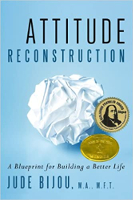
Image by Enhialus
Narrated by Marie T. Russell.
If you’ve sat and watched normal television these days, it’s not hard to find 10 advertisements for prescription drugs. From ADHD to digestive issues to erectile dysfunction, you’ll find an ‘instant’ solution. So not surprisingly, the topic of prescription drugs often comes up with clients who experience anxiety and worry.
According to the National Institute of Mental Health 40 million U.S. adults over 18 years of age have some kind of anxiety disorder. That is about 18% of people in a given year.
What Is An Anxiety Disorder?
An anxiety disorder is different than feeling anxious about a specific event. By definition, an anxiety disorder lasts at least 6 months and can get worse if it is not treated. They often occur with other mental or physical illnesses, including alcohol or substance abuse. In general, women are twice as likely as men to experience an anxiety disorder.
Here is a list of the common kinds of anxiety disorders that people experience:
- Panic disorder – anxiety to the max produces panic attacks.
- Obsessive-compulsive disorder -- usin rituals to control the anxiety due to upsetting thoughts, such as germs or dirt.
- Post-traumatic stress disorder (PTSD) -- a terrifying event that involved physical harm or the threat of physical harm produces anxiety.
- Social anxiety disorder – intense anxiety and self-conscious in everyday social situations. The fear they are being watched, judged, or embarrassed often interferes with work, school, and keeping friends.
- Specific phobias, such as flying, spiders, black cats, blood, heights, etc.
- Generalized anxiety disorder – anticipating disaster with exaggerated worry and tension, be it about health, money, family, or work.
More about Worry
We’re a society that likes to worry. Worrying is so prevalent, it almost feels socially acceptable. It's one of the less incapacitating symptoms of fear.
We consider it a good trait if a mom worries about her kids, a teenager worries about good grades, or a father worries about his company shutting down. We've accepted worry as a common human condition and while we've all been there (and may be there right now), it doesn't mean we have to live there.
Don't confuse worry with interest in maintaining well-being or an attitude that contributes to problem solving. The only thing you're guaranteed to create with worry is more anxiety and self-imposed misery. Know that worry is born of unexpressed fear. Worry means that we are spending a lot of time thinking about the future in a negative way, most of which never comes to pass.
Peace, fear’s opposite, is created when our attention resides in the present.
The sooner you learn to shift the focus from the future to the present, the better off you'll be. The good news is several kinds of therapy have proven helpful in controlling anxiety and worry. Support groups, stress management techniques, meditation, and support from one’s family, also are successful but most often people opt to treat it with medication and antidepressants.
My Prescription for Anxiety and Worry
My suggestions are somewhat different. They are simple. Natural. Free.
Underneath all of these types of anxiety, is the emotion of FEAR. And fear is one of our six emotions.
An emotion is a pure sensation, simple physiology in the body. You know the feeling -- that agitation, speedy, heart racing feeling of paralysis.
Instead of getting tense and tightening up your muscles, release the fear physically. When you feel anxious, let your body do what's natural: wiggle, jiggle, shudder, tremble, and quiver—like a dog at the vet. If it's easier, shake to music.
It may sound strange at first, but if you express the emotional energy with vigor -- up the spine, out the arms, hands, legs, in the neck and jaw -- it will move out of your body and you'll quickly feel more peaceful, centered, and focused. While shivering, don’t fuel your doom and gloom thoughts but just remind yourself: "It's okay to feel scared. It’s okay. I just need to shiver."
Here are some other pacifying thoughts you can repeatedly tell yourself as you interrupt the old chatter that perpetuates your fear. Pick one or two that resonate for you and repeat them often.
Everything is all right.
Everything will be all right.
One thing at a time.
I'll handle the future in the future.
I’ll do what I can and the rest is out of my hands.
Worry doesn’t work. It doesn’t make me happy.
Be here now.
Additional Suggestions
If you must worry, designate 5 minutes to that activity every day. For the rest of the time, keep hauling your attention back to the present, shivering, and repeating your truths. It’s a battle because the tendency to leap into the future is very strong, especially at times when you feel that fear energy. Remind yourself when you’ll next worry.
Make a detailed task list. Write down a list of your “to-dos” and then break all the things you need to do down into specific, small, easy tasks that you can easily accomplish. Then attend to one thing at a time, keeping your focus on what’s in front of you.
Prioritize what you need to do right now… What is happening right now that is in your control? Do what you can in the moment. Focus on doing well in the present and enjoy the now.
By sticking to the here and now, replacing worry thoughts with peace producing thoughts, and moving the energy out of your body, you’ll spend more time in the present. And that has a triple benefit: you do whatever you need to do with increased awareness, you squeeze worry and anxiety out, and you'll feel happier and more peaceful which automatically sets you up for a much better life!
©2021 by Jude Bijou, M.A., M.F.T.
All Rights Reserved.
Book by this Author
Attitude Reconstruction: A Blueprint for Building a Better Life
by Jude Bijou, M.A., M.F.T.
 With practical tools and real-life examples, this book can help you stop settling for sadness, anger, and fear, and infuse your life with joy, love, and peace. Jude Bijou's comprehensive blueprint will teach you to: ? cope with family members' unsolicited advice, cure indecision with your intuition, deal with fear by expressing it physically, create closeness by truly talking and listening, improve your social life, increase staff morale in just five minutes a day, handle sarcasm by visualizing it flying by, carve out more time for yourself by clarifying your priorities, ask for a raise and get it, stop fighting via two easy steps, cure kids' tantrums constructively. You can integrate Attitude Reconstruction into your daily routine, regardless of your spiritual path, cultural background, age, or education.
With practical tools and real-life examples, this book can help you stop settling for sadness, anger, and fear, and infuse your life with joy, love, and peace. Jude Bijou's comprehensive blueprint will teach you to: ? cope with family members' unsolicited advice, cure indecision with your intuition, deal with fear by expressing it physically, create closeness by truly talking and listening, improve your social life, increase staff morale in just five minutes a day, handle sarcasm by visualizing it flying by, carve out more time for yourself by clarifying your priorities, ask for a raise and get it, stop fighting via two easy steps, cure kids' tantrums constructively. You can integrate Attitude Reconstruction into your daily routine, regardless of your spiritual path, cultural background, age, or education.
For more info and/or to order this book, click here. Also available as a Kindle edition.
About the Author

Jude Bijou is a licensed marriage and family therapist (MFT), an educator in Santa Barbara, California and the author of Attitude Reconstruction: A Blueprint for Building a Better Life.
In 1982, Jude launched a private psychotherapy practice and started working with individuals, couples, and groups. She also began teaching communication courses through Santa Barbara City College Adult Education.
Visit her website at AttitudeReconstruction.com/




























